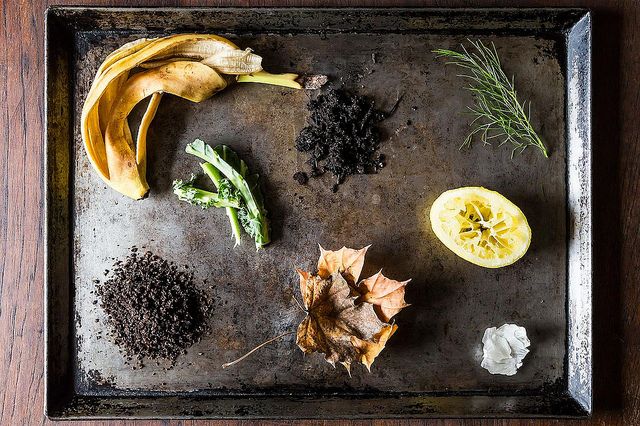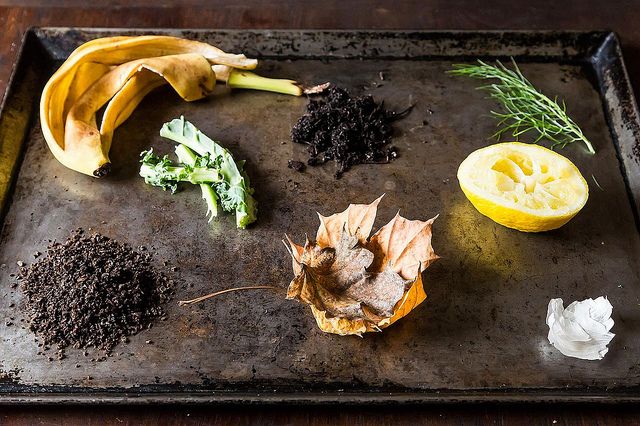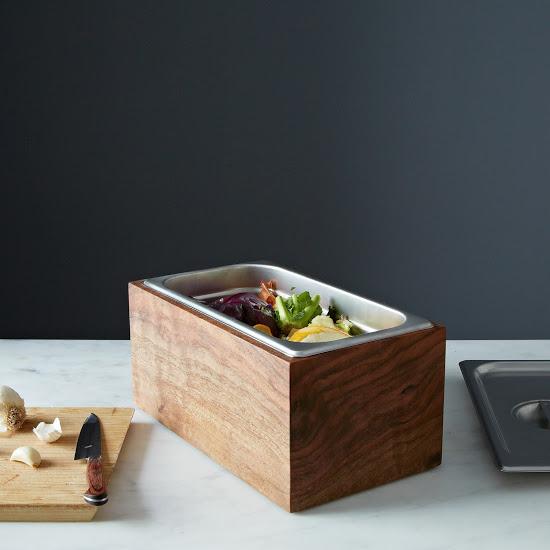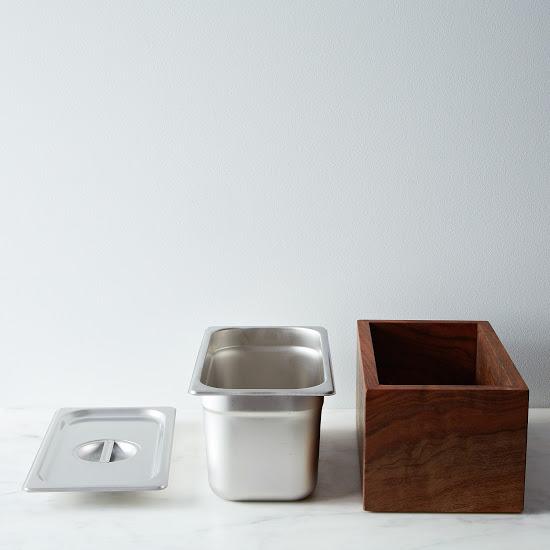Popular on Food52
17 Comments
bellly
July 20, 2019
I keep a rectangular plastic container inside of my fridge to collect scraps throughout the week. It's wonderful, no fruit flies.
Smaug
October 6, 2016
Wood ash, or ash from hardwood charcoal, is a great compost addition- most piles are quite acidic and often lack phosphorus. Leaves are generally considered green material, even brown ones. Food scraps are going to be a pretty minor part of your pile if you have a garden and are even slightly serious. Citrus rinds are fine in ordinary quantities. Trying to compose a compost pile is just silly for an amateur- you take what you can get when you get it.
Jeremy K.
March 30, 2016
Thanks for linking to our infographic at Sustainable America! There's lots more at www.ivaluefood.com/resources/composting. Readers should also know that we will soon be coming out with a mini-documentary on Huffington Post about composting featuring singer Jack Johnson and racecar driver/environmental activist Leilani Munter! Stay tuned!
JoJo
June 16, 2015
I am with Dairy Maid. We have an Earth Machine and I just throw everything in there along with a few shovels of leaves. Before jumping in I read up on the right proportions of browns to greens, the right moisture level, etc. but it's really not that complicated. Just do it!
Dairy M.
April 28, 2015
An additional type of composting: 'lazy ass' composting, which is what we do. More properly called "cold composting." Just throw all your compostables into a pile in the yard. Don't worry about getting the browns and greens right, just toss it all in there.
Frankly most people aren't going to bother to compost because everyone makes such a big deal about doing it "right" and getting the proportions correct. You don't have to worry about that.
When you need some black gold, rake aside the top of the pile and dig into the bottom. We have plenty for our veggie garden every spring, and there are only 2 of us at home.
Bonus: less to bring to the dump!
Frankly most people aren't going to bother to compost because everyone makes such a big deal about doing it "right" and getting the proportions correct. You don't have to worry about that.
When you need some black gold, rake aside the top of the pile and dig into the bottom. We have plenty for our veggie garden every spring, and there are only 2 of us at home.
Bonus: less to bring to the dump!
Bec
April 22, 2015
Love the countertop composter! Wow - I always thought I'd need to live in a house with a big yard area to do compost properly. Seems I have some investigating to do!
www.cultivatebeauty.com.au
www.cultivatebeauty.com.au
AntoniaJames
March 29, 2014
Our scraps are picked up by the city with our green waste every week. They gave us handy little green (square!) buckets with handy flip-top lids to keep under our sinks. We use "bio-bags," which are compostable, to take them out to the big green waste bin in our driveway. The waste management trucks take it to an enormous composting site. Since they started doing this, years ago, my weekly trash has been reduced to less than the size of a standard shoe box. We used to have a compost bin in our backyard, but it became a war zone for skunks and raccoons in the middle of the night, no matter how carefully we dug to bury the new stuff underneath. This device (also provided by the city) actually had a lock-down top, but that didn't seem to matter. It also attracted rats. Yes, I live in a city. There are rats, which seem to enjoy composted food scraps. That said, I'm going to start putting my banana peels in the ground around my fuschias, on the advice of the local garden center.
James W.
July 23, 2013
Thanks for sharing the Urban Composter™ with your readers! We noticed that the link to your store is no longer available, but your readers can buy one with us if they like it at http://urbancompsoter.co/
Shiny H.
March 29, 2013
To questions: (1) What exactly is in the accelerator? (2) If I have an indoor / container garden, do I just take some of this compost and mix it with my potting soil?
Andrea G.
March 26, 2013
If you have a yard, you can take a few days' worth of kitchen scraps and bury it anywhere in your yard. Put a stone or brick on top if you think rodents or raccoons will go after it. You can move the brick each time you bury a new batch. In a few days it will be gone and your soil will be richer.
qktiles
March 26, 2013
Wood ash actually is okay in a compost pile...I've had one for many years (I understand fruit trees especially like it). When I lived more rurally I had a 3-bin system; on my smaller village plot I use a covered composter, mostly to keep rodents away from the pile. You can also toss in the occasional shredded newspaper.





See what other Food52 readers are saying.